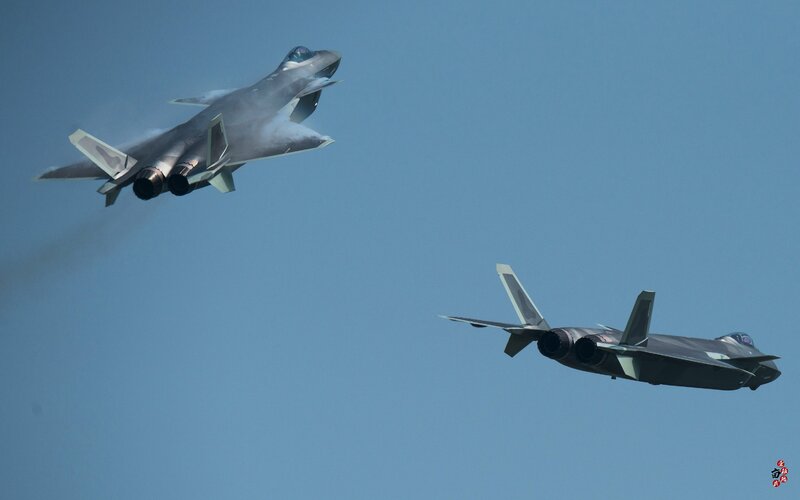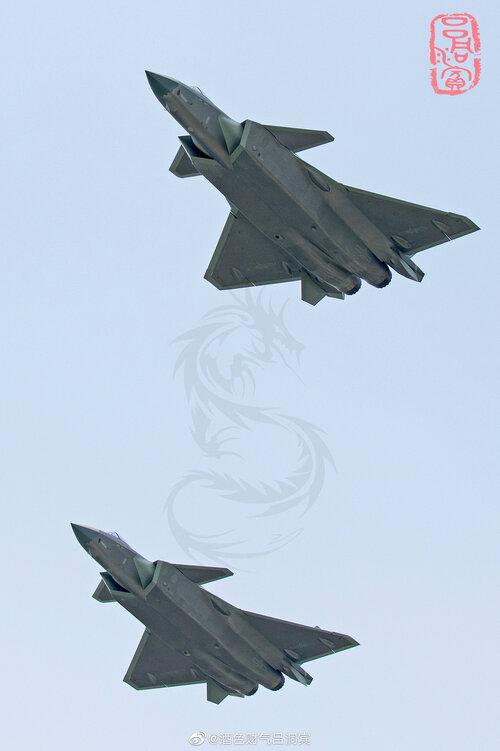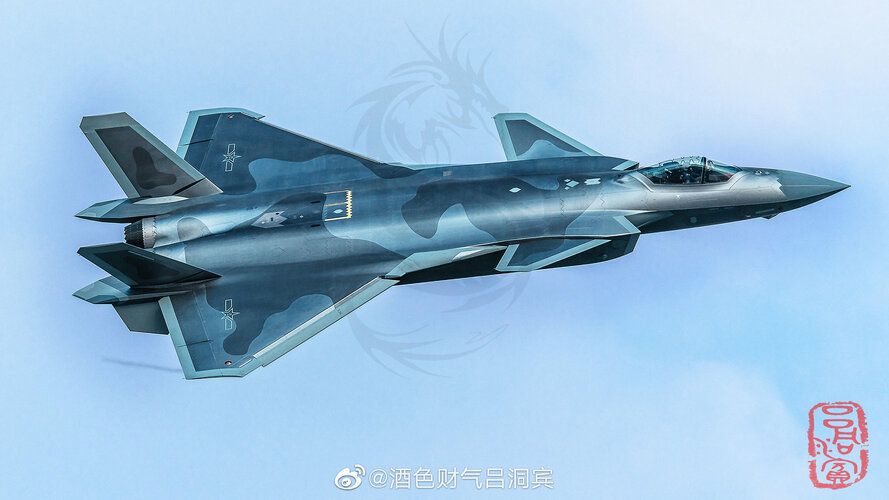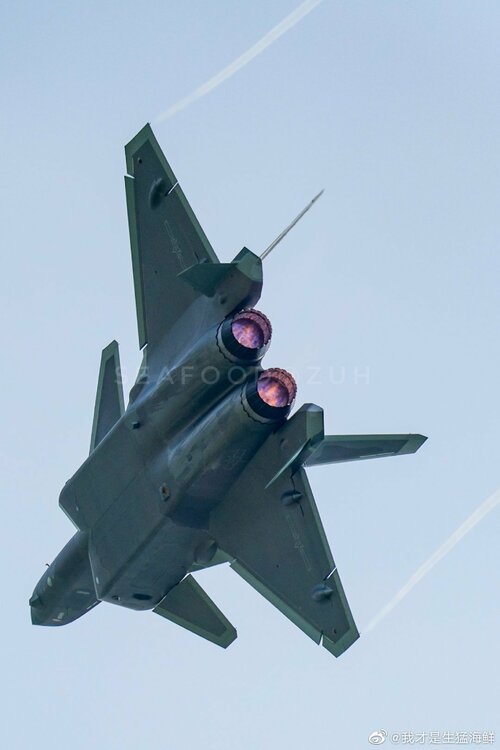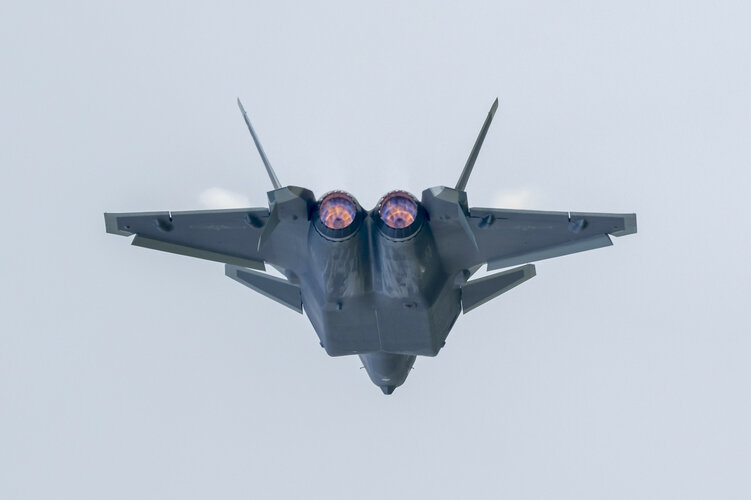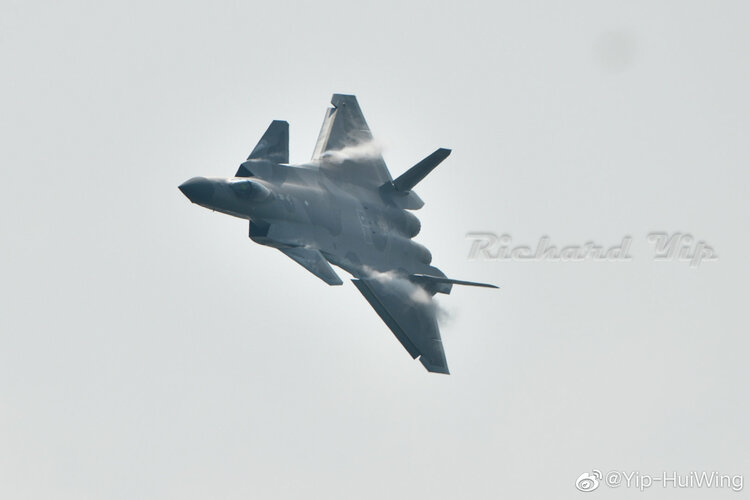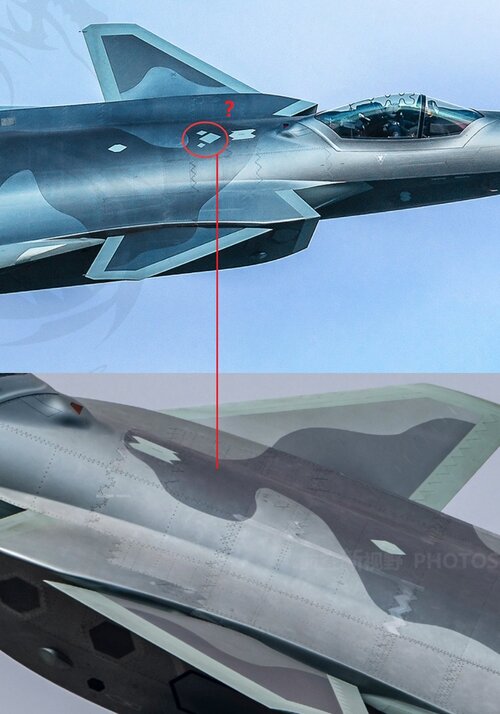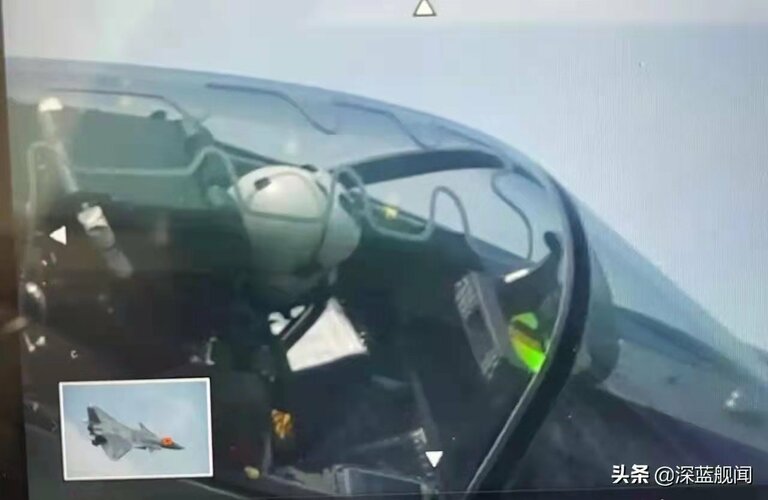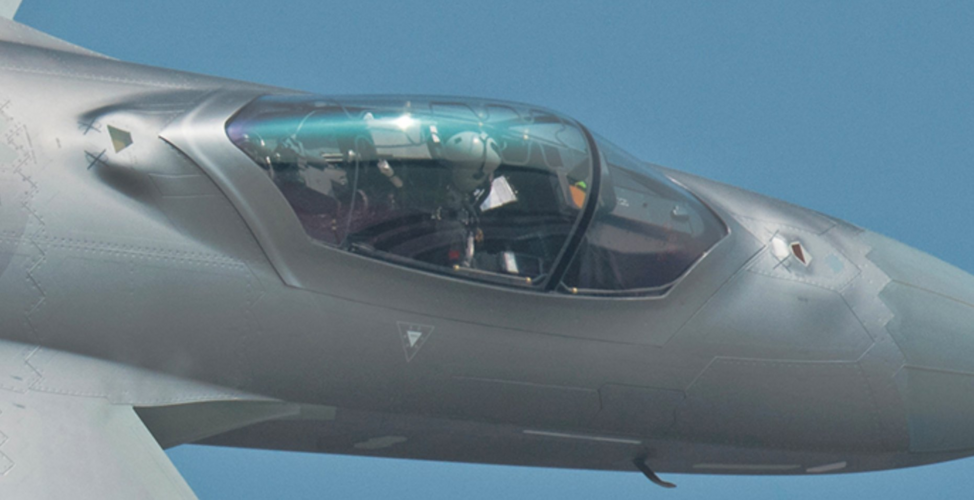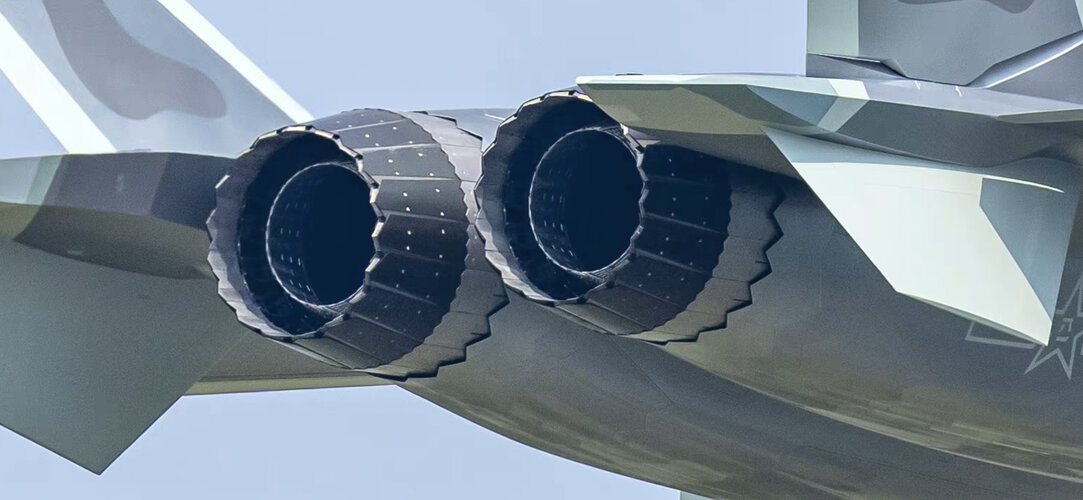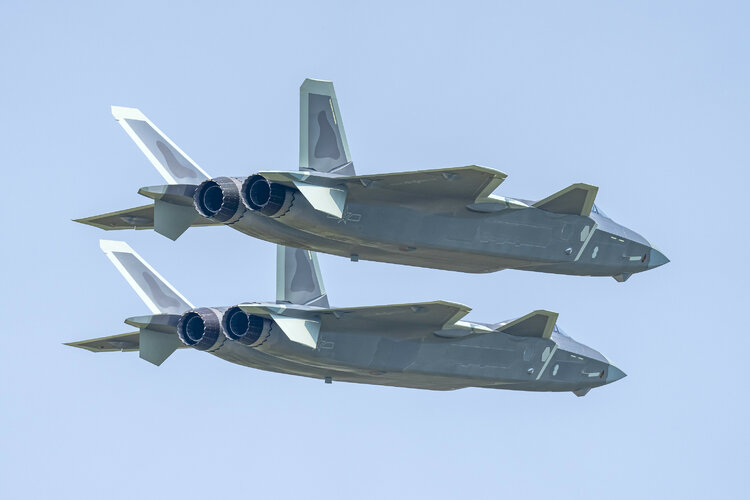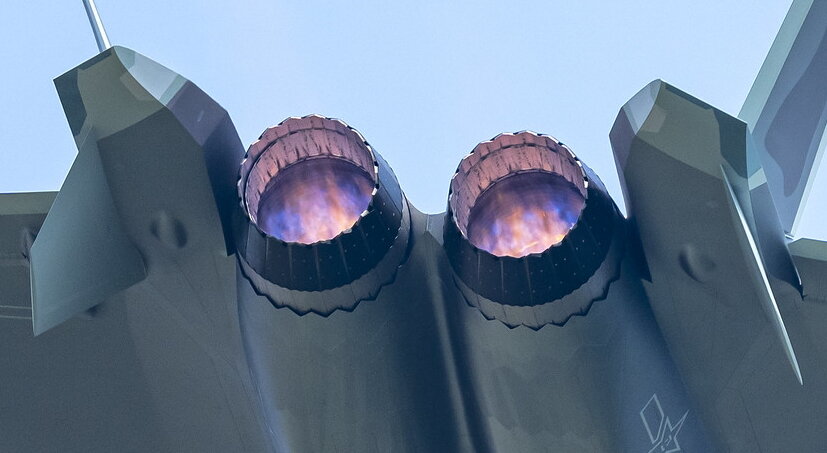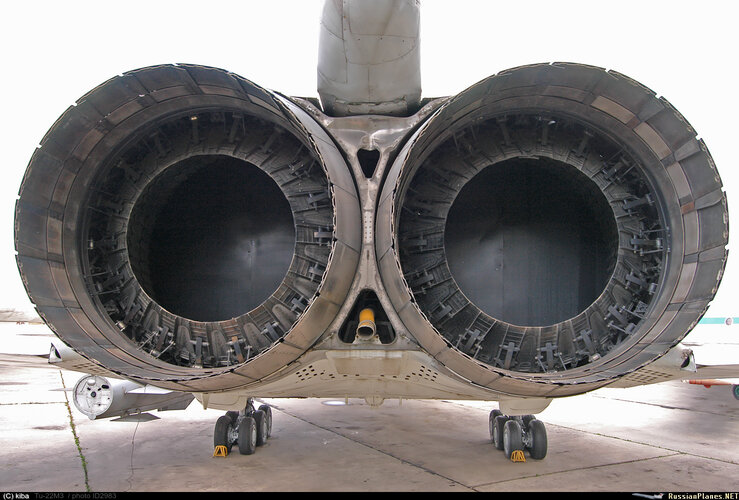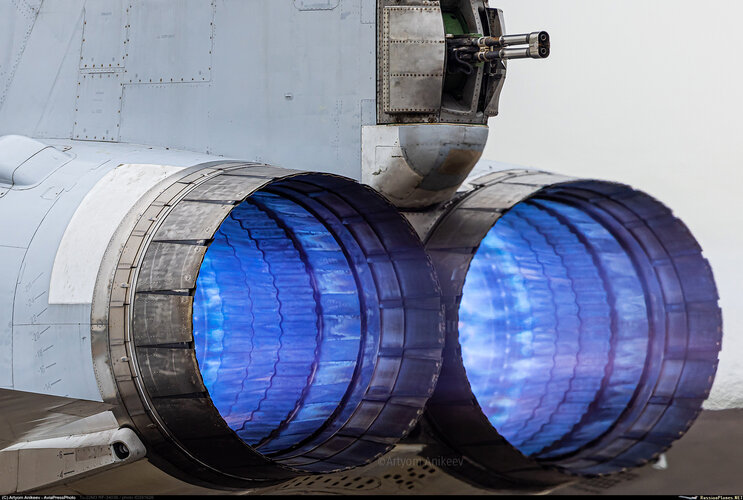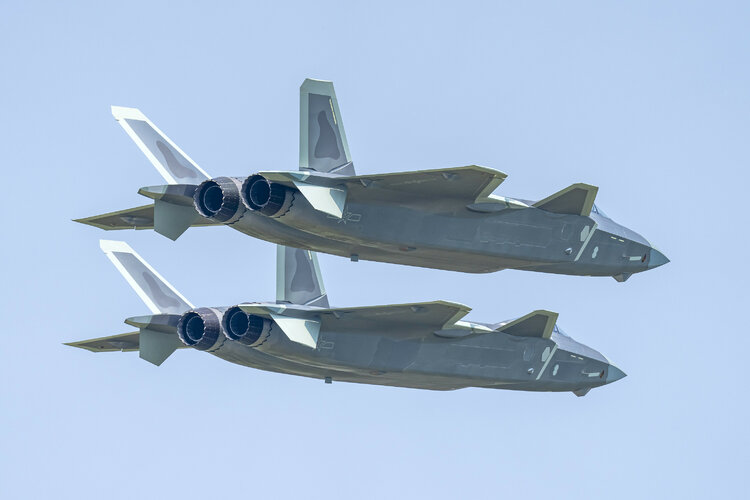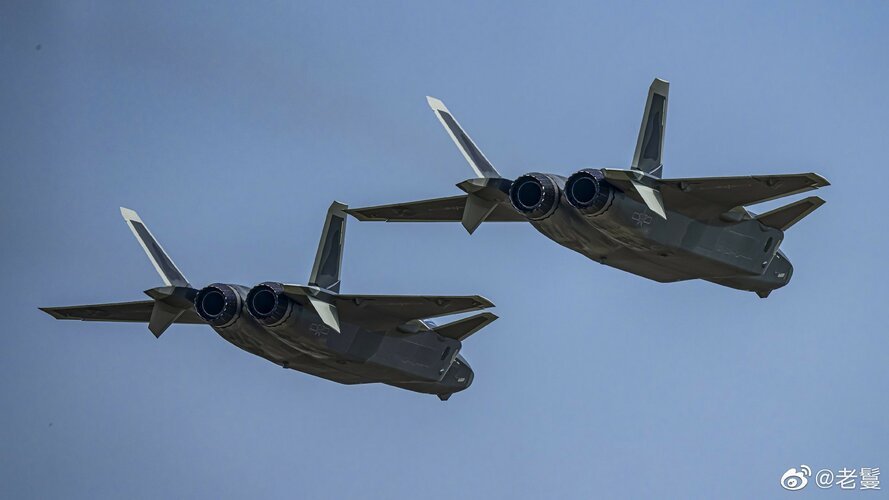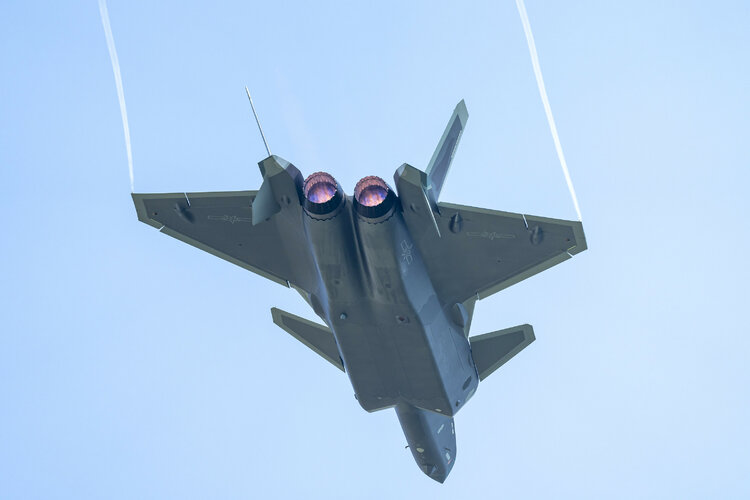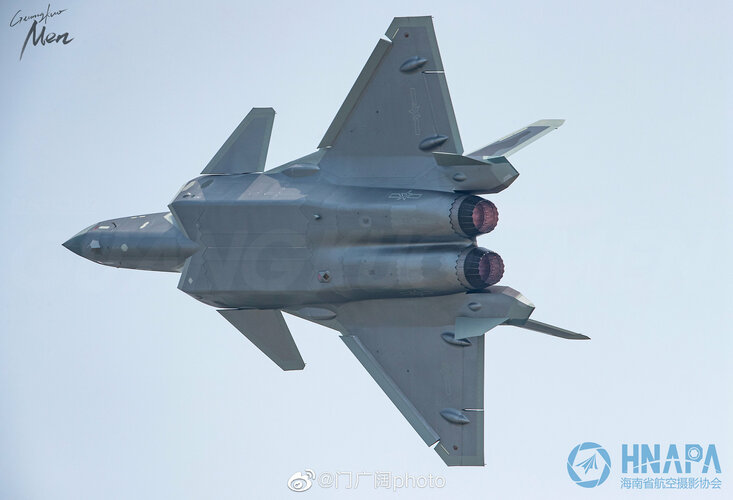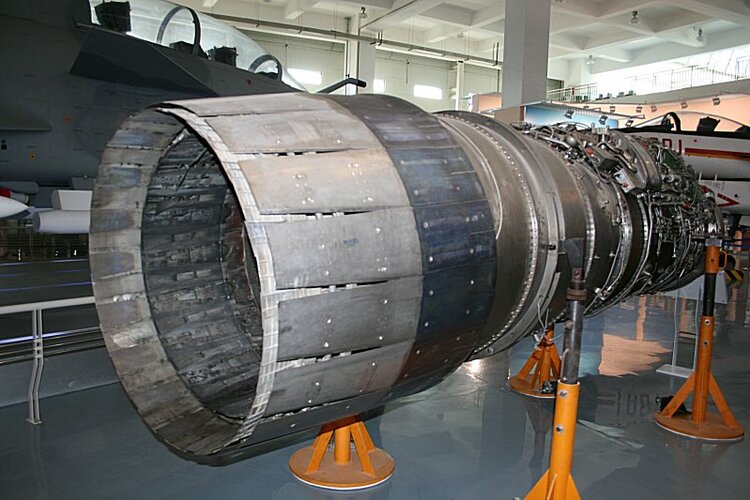a good guess would flexible material that forms a good seal making the surface continuous and even when doors are closed, and having similar electric conductivity properties to the surfaces around it. Basically for stealth reasons.Wonder why the doors have such dark outlines?
You are using an out of date browser. It may not display this or other websites correctly.
You should upgrade or use an alternative browser.
You should upgrade or use an alternative browser.
Chengdu J-20 news and analysis Part III
- Thread starter overscan (PaulMM)
- Start date
Cannonfodder43
ACCESS: Confidential
- Joined
- 8 December 2019
- Messages
- 115
- Reaction score
- 303
Perhaps not J-20 related specifically but given what the discussion in this Twitter thread revolved around, I thought this would be good to share.
First main post and thread with the shared interview.
View: https://twitter.com/RickJoe_PLA/status/1436202535560224772
Second linked thread to the relevant discussion regarding the J-20, Canards and the nebulous nature of the LO/VLO debate.
View: https://twitter.com/RickJoe_PLA/status/1436202542434717707
All in all, a respectful debate nonetheless. Certainly much more nuanced than that debate I had on r/Hoggit regarding the similar interview regarding Russian Air Power and the Su-57. The person I went back and forth with was one those people who took the whole "Su-57 is less stealthy that a Super Hornet" pill.
First main post and thread with the shared interview.
View: https://twitter.com/RickJoe_PLA/status/1436202535560224772
Second linked thread to the relevant discussion regarding the J-20, Canards and the nebulous nature of the LO/VLO debate.
View: https://twitter.com/RickJoe_PLA/status/1436202542434717707
All in all, a respectful debate nonetheless. Certainly much more nuanced than that debate I had on r/Hoggit regarding the similar interview regarding Russian Air Power and the Su-57. The person I went back and forth with was one those people who took the whole "Su-57 is less stealthy that a Super Hornet" pill.
dannydale
ACCESS: Top Secret
- Joined
- 13 May 2007
- Messages
- 545
- Reaction score
- 410
Found the problem. Literally you were on reddit.that debate I had on r/Hoggit
Cannonfodder43
ACCESS: Confidential
- Joined
- 8 December 2019
- Messages
- 115
- Reaction score
- 303
Considering that a good many people were critical of Justin's points in the video that was shared on that subreddit, it's not all hopeless.Found the problem. Literally you were on reddit.that debate I had on r/Hoggit
Besides, there is lots of interesting stuff one can learn and discover. It's all about knowing where to look.
Conspirator
CLEARANCE: L5
- Joined
- 14 January 2021
- Messages
- 324
- Reaction score
- 230
the chengdu has always been up there with some of my favs like the F-22 Raptor the F/A-18 Super Hornet. the Chengdu J-20 has an incredible design... very sound for it being made in china. and the airframe is absolutely genius. holding thrust while still preventing bend or break at high G manuvuers
It's believed to use a lot of 3D printed titanium for weight reduction. In practice, I suspect once the electronics are added, the empty weight is considerable (albeit likely lighter than the F-22).the chengdu has always been up there with some of my favs like the F-22 Raptor the F/A-18 Super Hornet. the Chengdu J-20 has an incredible design... very sound for it being made in china. and the airframe is absolutely genius. holding thrust while still preventing bend or break at high G manuvuers
Of course, a different argument can be made regarding the J-20's design. The ventrals fanboys were hoping could have been left off, I personally think the tailfins should go as soon as TVC is reliable, and the canards are not properly aligned with the opposite wing as some projections of the Rafale suggest.
It is a very strong and innovative improvement in Chinese aircraft design. More importantly, for me, it can be upgraded to a much better stealth fighter, with the proper increases in engine power and the maturity of TVC.
#J-20C / #J-26
- Joined
- 2 January 2006
- Messages
- 3,828
- Reaction score
- 5,132
#J-20C / #J-26
care to explain what a J-26 is in your opinion?
J-16 is to J-11 as J-26 would be to J-20.#J-20C / #J-26
care to explain what a J-26 is in your opinion?
We've had the same argument elsewhere, I don't like the CURRENT J-20 very much, and I think it's a flawed aircraft in the present mode, but if TVC WS-15s came online, the airframe could be substantially modified to become a better stealth aircraft, and I think that's part of the J-20 design, that the removal of elements and adjustment of elements could significantly improve stealth as well as payload.
- Joined
- 2 January 2006
- Messages
- 3,828
- Reaction score
- 5,132
J-16 is to J-11 as J-26 would be to J-20.#J-20C / #J-26
care to explain what a J-26 is in your opinion?
We've had the same argument elsewhere, I don't like the CURRENT J-20 very much, and I think it's a flawed aircraft in the present mode, but if TVC WS-15s came online, the airframe could be substantially modified to become a better stealth aircraft, and I think that's part of the J-20 design, that the removal of elements and adjustment of elements could significantly improve stealth as well as payload.
But IMO this comparison is off by a wide margin: First, the J-16 is not a better J-11, but a dedicated multirole fighter similar to the Su-30 evolved from the Su-27. As such better depends vastly for what role it was developed.
And second -even if I know we both won't agree - I think the J-20 is in no way a "flawed design". It surely is a compromise given China's lack of experience in stealth and other fields of importance for a 5th generation type, but it is not a failure as you always try to portray.
Even more I cannot understand your constant obsession of such ideas like the canards or tails could be deleted! That's ridiculous to think CAC will remodel the J-20 so much.
IMO more likely the J-20 will be more some sort of interim type until the 6th generation type will be ready later in the 2030s and this one maybe won't have tails and canards, but for the J-20 this won't happen.
The J-16 is to the J-11 as a Su-30 is to a Su-27; i.e, the Su-30 is substantially different than the Su-27 insofar as that it's the strike variant of the Flanker line. As such, it sacrifices maximum speed for better load carrying ability, as well as sacrificing wing loading and thrust to weight due to the weight increase.J-16 is to J-11 as J-26 would be to J-20.#J-20C / #J-26
care to explain what a J-26 is in your opinion?
We've had the same argument elsewhere, I don't like the CURRENT J-20 very much, and I think it's a flawed aircraft in the present mode, but if TVC WS-15s came online, the airframe could be substantially modified to become a better stealth aircraft, and I think that's part of the J-20 design, that the removal of elements and adjustment of elements could significantly improve stealth as well as payload.
But IMO this comparison is off by a wide margin: First, the J-16 is not a better J-11, but a dedicated multirole fighter similar to the Su-30 evolved from the Su-27. As such better depends vastly for what role it was developed.
And second -even if I know we both won't agree - I think the J-20 is in no way a "flawed design". It surely is a compromise given China's lack of experience in stealth and other fields of importance for a 5th generation type, but it is not a failure as you always try to portray.
Even more I cannot understand your constant obsession of such ideas like the canards or tails could be deleted! That's ridiculous to think CAC will remodel the J-20 so much.
IMO more likely the J-20 will be more some sort of interim type until the 6th generation type will be ready later in the 2030s and this one maybe won't have tails and canards, but for the J-20 this won't happen.
A J-26, likewise, would also be a strike variant of the J-20 line; it sacrifices maneuverability (i.e, you can delete tailfins, ventrals) for payload, probably with a larger wing. As a side effect, frontal stealth, minimal RCS, and drag improve.
Regarding the J-20, I've never been a proponent of removing canards, because we've both seen the Song Wencong papers and we both know that the J-20 is designed to exploit the interaction of LERX, Canards, and Delta wings. Of course, before Chinese fanboys keep on playing it up as original or secret sauce; the Rafale does this as well, although its LERXes are substantially smaller than on the J-20 (i.e, the J-20 pushes the same idea farther).
My criticism of the canards is the alignment; all pictures of the J-20's alignment show that the canards seem more optimized for aerodynamics than stealth. It's been proposed myriad times that the canards are designed to be coplanar with the opposite wing, but if you measure the J-20's canards, there's a notable divergence in angle between the canard and the opposite wing.
Another aspect is that you see me getting trashed for playing up the Checkmate's RCS (Paralay seems to indicate that the Russians expect the Checkmate to have a better average stealth level than the F-22 and F-35) based on its delta + V-tail configuration. Ironically, the J-20's canard configuration is potentially identical to the Checkmate's delta + V-tail configuration, except that the V-tail pitch-yaw control is handled by a canard as opposed to a traditional V-tail.
- Joined
- 2 January 2006
- Messages
- 3,828
- Reaction score
- 5,132
FighterJock
ACCESS: Above Top Secret
- Joined
- 29 October 2007
- Messages
- 5,609
- Reaction score
- 5,939
Looking rather good Deino, I like the looks of the J-20B.
BLACK_MAMBA
ACCESS: Secret
- Joined
- 17 July 2019
- Messages
- 382
- Reaction score
- 879
Some nice pictures of a J-20 with a WS-10 engine from Zuhai.
- Joined
- 27 December 2005
- Messages
- 17,749
- Reaction score
- 26,422
- Joined
- 27 December 2005
- Messages
- 17,749
- Reaction score
- 26,422
I must say I wouldn't think of the possibility of some telephoto lens camera getting a glimpse of the screens from the ground, as the plane does it routine in the air. But evidently someone thought of that option as well, and took measures against it.
FighterJock
ACCESS: Above Top Secret
- Joined
- 29 October 2007
- Messages
- 5,609
- Reaction score
- 5,939
Anyone know if the J-20 will finally be able to supercruise with the new WS-10s? I certainly hope so.
BLACK_MAMBA
ACCESS: Secret
- Joined
- 17 July 2019
- Messages
- 382
- Reaction score
- 879
The WS-15 still in development is meant to unlock more capabilities for the aircraft than current engines offer.Anyone know if the J-20 will finally be able to supercruise with the new WS-10s? I certainly hope so.
siegecrossbow
I really should change my personal text
- Joined
- 12 March 2012
- Messages
- 707
- Reaction score
- 2,106
Kudos to @Deino.
Airshow China 2021: Chinese air force displays J-20A powered by domestic engines
The People's Liberation Army Air Force (PLAAF) has, for the first time, demonstrated to the public a variant of the Chengdu Aircraft Industry Group (CAIG) J-20A...
www.google.com
- Joined
- 27 December 2005
- Messages
- 17,749
- Reaction score
- 26,422
Cockpit is half-way between F-22 and F-35 with HUD, large central display and then an additional screen with buttons below.
The EO sensor fairing appears to be a placeholder, so perhaps this is a test airframe for the engines?
latenlazy
I really should change my personal text
- Joined
- 4 July 2011
- Messages
- 245
- Reaction score
- 37
The EO sensors are being covered.The EO sensor fairing appears to be a placeholder, so perhaps this is a test airframe for the engine
- Joined
- 11 February 2007
- Messages
- 2,570
- Reaction score
- 4,382
The 'additional screen', assuming we're looking at the same thing, looks to be a fairly conventional MHDD, and given it's to the side of his left leg, that strongly suggests there's space for a second one on the right side of the cockpit. Note also that it looks like a tablet on his leg, rather than the traditional notepad.Cockpit is half-way between F-22 and F-35 with HUD, large central display and then an additional screen with buttons below.
I'm trying to work out what's behind his oxygen hose. It could be a flip-pad, I'm not certain I can't just about see binder rings at the top, but it's very bright compared to how dark the rest of the cockpit is in that image, and it's about the same size as the MHDD by his knee. I don't think we're looking at reflections, because both are partially obscured by different things.
- Joined
- 15 January 2021
- Messages
- 401
- Reaction score
- 1,471
On the J79, there was a gap between the convergent nozzle and the divergent section where engine bay cooling air was entrained into the exhaust flow.Not sure what to make of it. Makes me think of an RD-33 with the gap between the nozzle and "turkey feathers".
But this gap is huge, it almost looks like they are separating the fan bypass flow from the core exhaust all the way to the end of the convergent section of the nozzle. Hard to tell, but it looks like there is some linkage between the outer fan duct convergent nozzle inward to the core flow convergent, so they move open and closed together, with the flows joining in the divergent section of the nozzle.
I’m not sure of the reason for this unless they have a big difference between the cold bypass flow pressure and the core hot discharge pressure and don’t want to mix them. The complication for trying to run separate Afterburner sections between the hot and cold sections and cooling the dividing tube seems pretty massive.
Rd33 has the inner nozzle protruding beyond the outer cowling. To me, it looks a bit more like m88 engine where the inner nozzle is shorter.
But what I find perplexing is this:
The ws10a had a similar nozzle.
Ws10b came after that, having a nozzle like al31, f100/f110.
And then we got ws10c which once again reverted to double nozzle design.
Now why would it be beneficial to go back to that design?
But what I find perplexing is this:
The ws10a had a similar nozzle.
Ws10b came after that, having a nozzle like al31, f100/f110.
And then we got ws10c which once again reverted to double nozzle design.
Now why would it be beneficial to go back to that design?
Yes, this is a convergent ejector nozzle of the kind that was popular up to the 1960s and is still used by the M88, the RD-33 has a full con/di design (by the looks of it with independent throat/exit control, actually!).
Didn't the WS-10 on the J-11/16 switch to convergent/divergent only recently, well after we started seeing J-20s powered by the engine? Otherwise, one hitherto incidental benefit of the ejector nozzle might make it attractive for use on a LO airframe: the sheath of cool secondary air around the engine exhaust decreases IR signature. It's probably nowhere near as effective a measure for this purpose as a 2D nozzle or something, but it might just be good enough to warrant its retention on the J-20.
Didn't the WS-10 on the J-11/16 switch to convergent/divergent only recently, well after we started seeing J-20s powered by the engine? Otherwise, one hitherto incidental benefit of the ejector nozzle might make it attractive for use on a LO airframe: the sheath of cool secondary air around the engine exhaust decreases IR signature. It's probably nowhere near as effective a measure for this purpose as a 2D nozzle or something, but it might just be good enough to warrant its retention on the J-20.
It's an ubiquitous, well-known solution in older engines such as the J79, as has been mentioned. In fact (albeit with airframe- instead of engine-mounted secondary nozzles) it's what previous Chinese engines used, so I doubt there was a need to copy or import.
In any case, there is certainly no separate duct burner for the outer airflow, note how the inner nozzle petals lie flush with the inside of the outer contour when fully open in afterburner:
(Some bonus shots of the NK-25 on the Tu-22M3 for comparison - never pass up a chance to post photos of the binary blue supergiants )
)
In any case, there is certainly no separate duct burner for the outer airflow, note how the inner nozzle petals lie flush with the inside of the outer contour when fully open in afterburner:
(Some bonus shots of the NK-25 on the Tu-22M3 for comparison - never pass up a chance to post photos of the binary blue supergiants
Attachments
I find it interesting that rivets are plainly visible around the fuselage/canopy area. That cannot help with its LO RCS.Partial cockpit shot. Looks like all displays are off though.
Another one ...
View attachment 665366
I'd actually see the main benefit as being stealth and maintainability; i.e, concentrating the hot airflow in the center means that coatings on the exterior, which absorbs traveling waves from the main aircraft body, are subjected either to less heat or less total heat stress. In the former case, you can use less temperature tolerant coatings. In the latter case, maintenance requirements are reduced.Yes, this is a convergent ejector nozzle of the kind that was popular up to the 1960s and is still used by the M88, the RD-33 has a full con/di design (by the looks of it with independent throat/exit control, actually!).
Didn't the WS-10 on the J-11/16 switch to convergent/divergent only recently, well after we started seeing J-20s powered by the engine? Otherwise, one hitherto incidental benefit of the ejector nozzle might make it attractive for use on a LO airframe: the sheath of cool secondary air around the engine exhaust decreases IR signature. It's probably nowhere near as effective a measure for this purpose as a 2D nozzle or something, but it might just be good enough to warrant its retention on the J-20.
As for the IR claim:
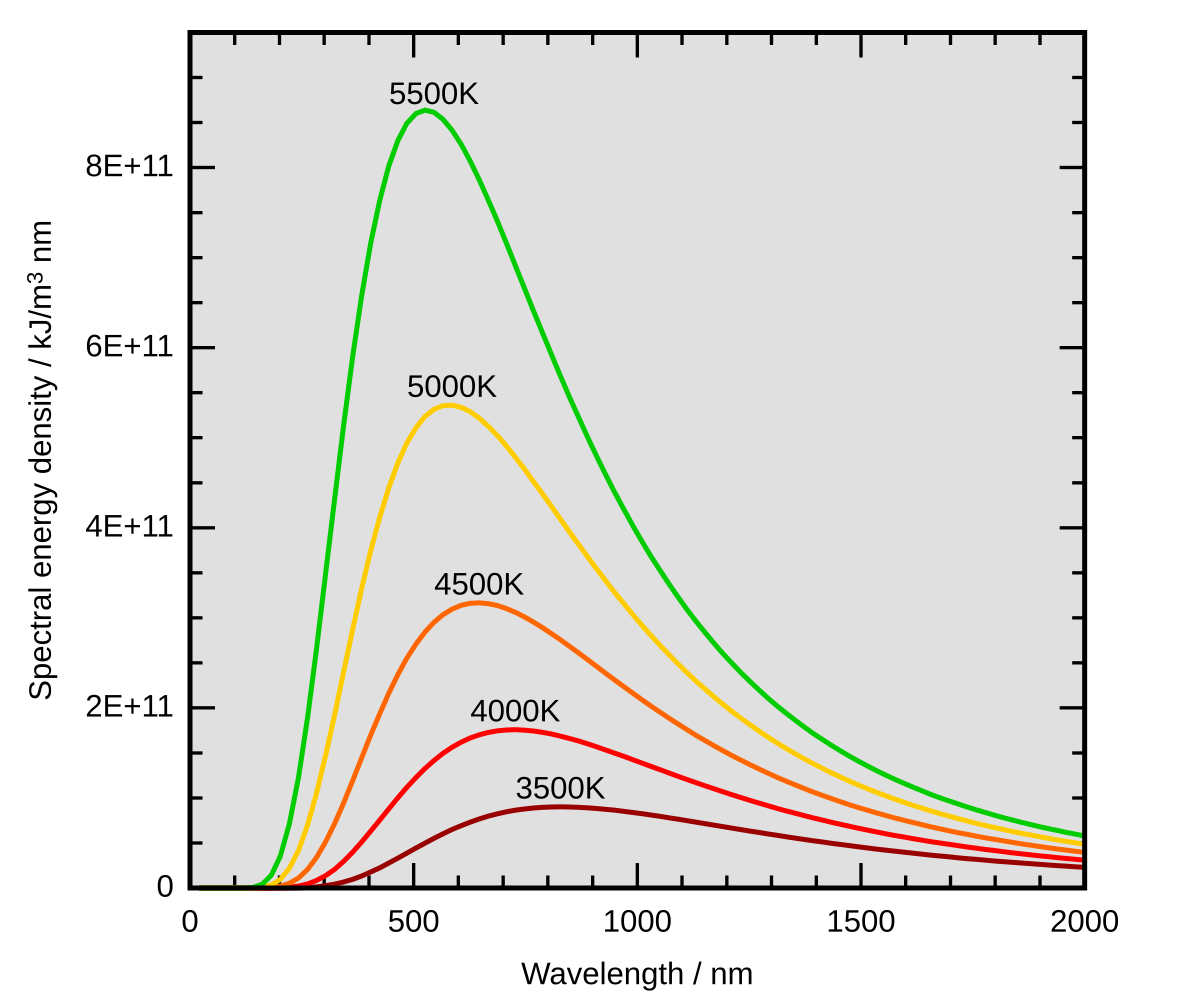
It seems that IR emissions vary as:
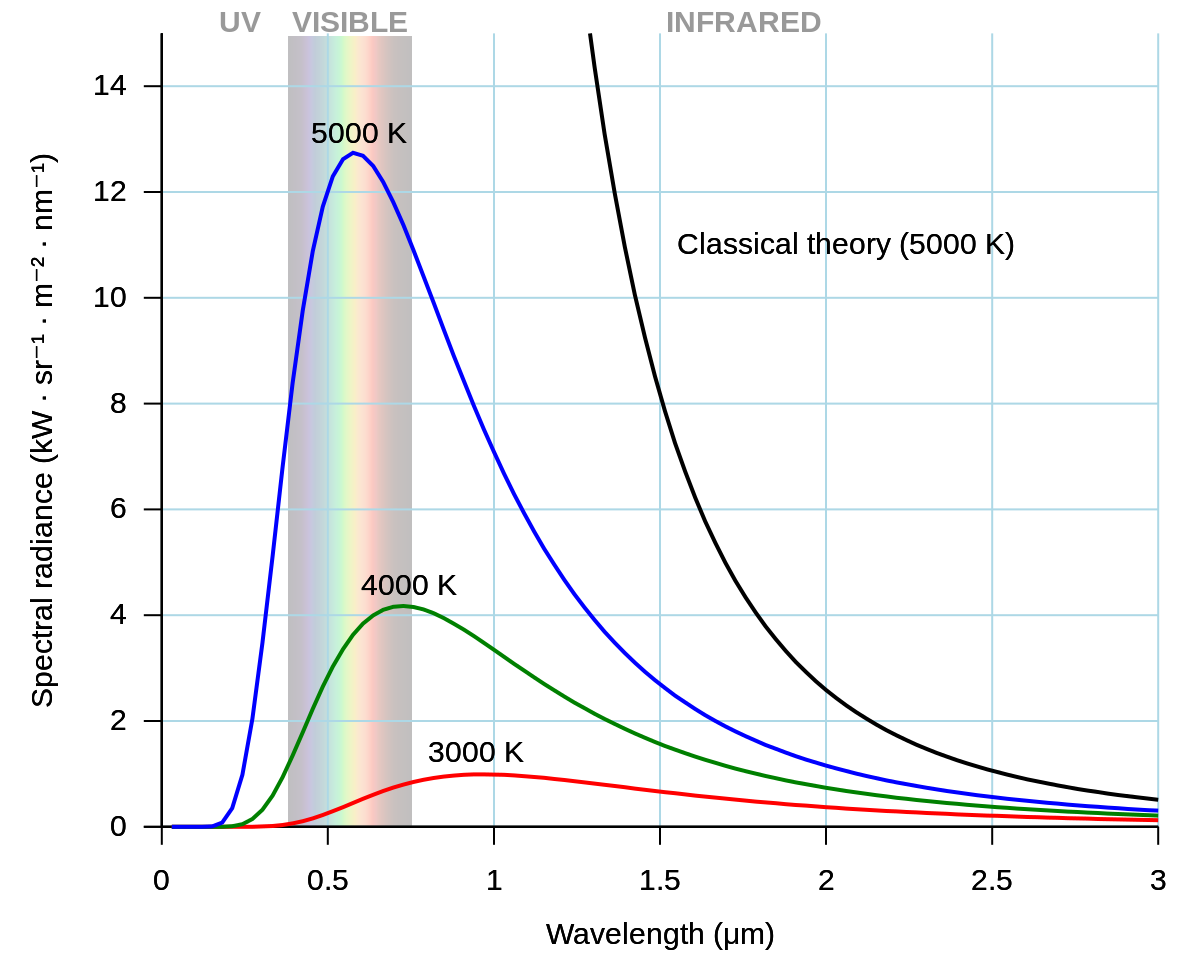
Planck's law - Wikipedia
e^T (with an initial displacing constant). This implies that total IR emissions, depending on other variables might be higher for a small, hot object compared to a larger mass containing the same amount of heat energy.
The localization of the heat energy from the exhaust, of course, makes it easier for the aircraft to hide the high-temperature zone, but that might not be a sufficient trade-off compared to having the hot air from the engine turbine mix with the bypass air.
- Joined
- 3 June 2011
- Messages
- 18,338
- Reaction score
- 12,240
If they're below the surface the effect is probably minimal.I find it interesting that rivets are plainly visible around the fuselage/canopy area. That cannot help with its LO RCS.Partial cockpit shot. Looks like all displays are off though.
Another one ...
View attachment 665366
- Joined
- 27 December 2005
- Messages
- 17,749
- Reaction score
- 26,422
J-20 5th Generation Fighter VII
Close up of the J-20A's WS-10C. (via @四川地产界高层-军事画家 from Weibo) Excellent picture. The nozzle is much more sophisticated than I would have given it credit.
www.sinodefenceforum.com
Attachments
- Joined
- 27 December 2005
- Messages
- 17,749
- Reaction score
- 26,422
Similar threads
-
Shenyang FC-31 demonstrators / J-35 naval fighter / J-35A land-based version
- Started by Foxglove
- Replies: 1K
-
-
-
-

